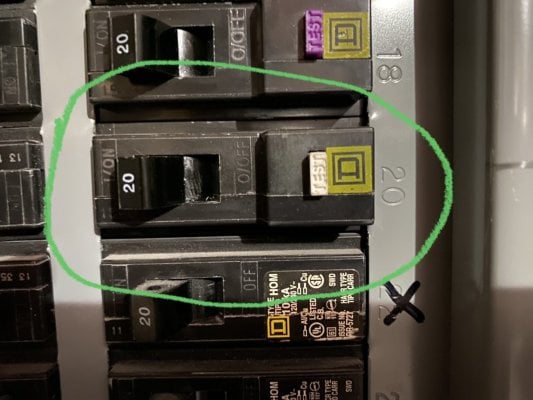I will say though that's considered extending a circuit wich requires it to be arc fault protected but you can get a combo afci/gfci receptacle.So opening up the outlet it appears that it's the end. Just one black, one white and a round. 12/2 NMB. I had only found 4 dining room outlets, one foyer outlet and one exterior outlet on it. But now I know it's not in the middle. And knowing that it's the end might make it easier to relocate.
still I like this over having it under and behind the aquarium




















